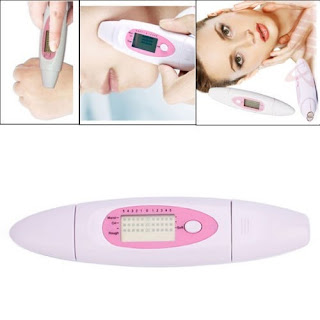According to dermatologists, analysing how hydrated your face is and how it produces oils will dictate the correct skin care products. This analysis can help when you are deciding what cleanser, moisturizer and exfoliator to use during your skin care. A skin analysis gives your skin the opportunity to be examined and studied by an expert. Dehydration skin analysis involves measuring the amount of water the skin has versus the water it can retain.
Using skin analysis tool, the reading of 30 or below means the skin is severely dehydrated, between 30 to 50 means its somewhat dehydrated and above 50 means it is hydrated. Hydration level will determine what areas in the skin care routine might need improvement.
Ultraviolet light is used to check for sun damage and determine if the t-zone is active. Some people experience dryness in their skin because they over clean their skin to remove oil, skin has to retain essential oils in order to keep it hydrated. Using ultraviolet light, estheticians can determine the activeness of the t-zone and if the skin is oily, normal or dry.
Knowing your skin type and problem areas you want to solve can help you understand what works best for each phase of the skin care routine. Get a gentle cleanser that fits your specific skin type: sensitive, normal, dry, combination or oily. Use a gentle cleanser to clean your face, rub the product gently onto the face until it lathers. Circular motions are important because it gets the blood flowing in the skin and allows the product to reach deep into the pores.
Use toner to get rid of oils and dead skin that might be left behind during the cleansing phase. Applying serum after the toner, it adds nutrients to all the layers of the skin. Addition of serum can correct uneven texture, dark marks or dehydration. Then apply moisturizer with SPF during the day to protect the skin from harmful UV rays. Use an exfoliator to remove dead skin cells that are left behind in the pores. You can do this weekly.
haleplushearty.blogspot.com


